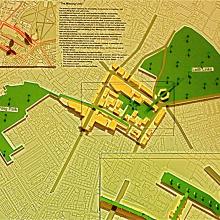
Back in October 2013 we reported a City of Edinburgh Council survey investigating the Natural Neighbourhoods of the capital. Its results were reported to the Communities and Neighbourhoods Committee one year later (see pdf below).
Spurtle’s bottom-up view of the world, specifically a hyperlocal focus on the elastic and reinterpretable amalgam known as ‘Broughton’, explains our interest in this matter and initial welcome for its investigation (Breaking news, 20.10.13).
But the results are important to everyone because CEC says they will inform how it plans and communicates services, and will be fed into both the Scottish Government’s review of Data Zone boundaries, and the Local Government Boundary Commission’s Fifth Review of Electoral Arrangements.
What has emerged is fascinating, and the simplest way to envisage this Holy Roman Empire of petty duchies is by zooming in on the map here.

Spurtle was relieved to see that, in our neck of the woods at least, there appear recognisable and realistic subdivisions: Canonmills; Broughton Road / Powderhall; Bellevue / Broughton; Gayfield / Broughton Street; New Town; Stockbridge; and Inverleith.
Contrary to our worst fears, no 'Greater Leith' lumbered out of the North and swallowed the lot.
These neighbourhoods' boundaries are defined by thoroughfares, with four notable exceptions:
- East London Street seems to face exclusively north owing to the impermeable barriers of Drummond Community High School, the Mansfield-Traquair Centre and the Lothian Buses depot rather than anything else.
- Pilrig straddles Pilrig Street (which Spurtle considers the boundary of Leith and Broughton) with its north-eastern edge bound by a cul-de-sac: Balfour Street.
- Barony Street and the North Dublin Street Lane enclave face east towards Broughton Street, whereas the adjacent Albany Street (less than a Range Rover's hoot away) has its eyes fixed westwards on the sunlit uplands of the New Town.
- Bellevue Crescent, in a gratifying repeat of St Mary’s historic parish-expansion and (more recent) Inside-Out visions, looks eastwards not westwards (Issue 172, p.3; Issue 163, p.1).
So far so good. But Spurtle advises caution.
The survey was based on 3,787 responses, claims the report reproduced below. Is this a sufficient number from which to draw conclusions, and how evenly spread across the city were they?
Such doubts recur on looking at CEC's own analysis of the data (available here). For a start, it mentions only 3,091 entries without explaining the apparent shortfall of 696 responses. According to this analysis, Gayfield and Powderhall received only one mention each, and yet they appear as distinct entities on the map.
Again using CEC's analysis, some 482 responses (roughly 15.6%) were from City of Edinburgh Council’s own staff. We don’t know whether CEC staff are a representative socio-economic cross-section of Edinburgh’s population, proportionately dispersed across the city as a whole. But it is surely reasonable to wonder whether these employees – contacted in the workplace, perhaps predisposed to answer such questionnaires, and bringing to bear an exceptional set of professional locational/administrative preconceptions and aspirations – may have skewed the results.
However, this is not the only reason to regard the results sceptically. The Council Report of 23 September airily describes the process as follows:
By synthesising direct and indirect responses from the public with the views of partners and elected members, a single set of defined neighbourhoods has been created which best reflect the views of all concerned.
Excuse me? What exactly is an ‘indirect’ response? To what extent do ‘elected members’ – each with one eye boggling the boundary commission – accurately reflect their constituents’ opinions on this subject? What precisely was the process of synthesising? What weights were given to different sources of opinion? And who says it's the best reflection of everyone’s views?
If you can find answers to these questions in the Council paperwork, you’ll have done better than we have. It is fair to say, though, that those who commission surveys generally get the answers they want.
It ain't the way that you do it, but what you do
Spurtle claims no particular expertise in picking apart surveys of this sort, and it may turn out that some or all of the questions raised here can be adequately answered.
Ultimately, however, what matters is the purposes to which they are put. The factor which will have by far the most effect on services in Edinburgh, regardless of any ‘natural neighbourhoods’ used in explanation, is money or rather the Council’s lack of it. There are more tough times ahead.
Got a view? Tell us at spurtle@hotmail.co.uk and @theSpurtle and Facebook
------------------------------------
 Rebecca Bridgland CEC are idiots.
Rebecca Bridgland CEC are idiots.